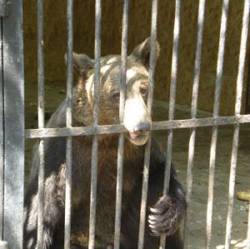
Image from http://www.ehow.com
With Thanksgiving coming up, of course I have to bring up the Turkey. Thanksgiving is one of my favorite holidays and guess what… I don’t even have to eat turkey to enjoy it. I know it’s tradition, but tradition doesn’t mean it’s right. The turkey industry is a very cruel industry and it shouldn’t be ignored just because of a silly tradition. Don’t get me wrong, I love to eat on Thanksgiving too. I’m not telling you not to stuff yourself, just skip the turkey. Think about what that turkey went through before reaching your table.
The Turkey Industry
Every year about 40 million turkeys are killed for Thanksgiving. Turkeys, like other animals raised for food, are raised on factory farms. Factory farms are meant to mass produce animals and maximize profit, but come at the expense of the animals. Turkeys are packed into filthy, overcrowded sheds with thousands of other turkeys, where they spend their whole lives. Their beaks are cut off without pain relievers to keep them from killing each other from the stress.

Image from http://www.peta.org
Turkeys are genetically manipulated to grow as big as possible, as fast as possible. In the 1960s, it took 220 days to raise a 35-pound turkey. Due to selective breeding and growth-promoting drugs, it now takes only 132 days. Turkeys grow so big and fast they often become crippled under their own weight and suffer organ failure. They can’t even reproduce naturally and must be artificially inseminated. After 14 to 20 weeks, turkeys are transported to slaughter without food, water or protection from extreme temperatures.
In the United States, unlike many other countries, there is no federal legislation protecting turkeys (or other poultry) on the farm, in transit, or during slaughter; and most state anti-cruelty statutes do not apply to farm animals.
This is a video from an undercover investigation from Mercy for Animals
Having a Cruelty-Free Thanksgiving
As long as people continue to eat turkey, this nightmare will continue. The best thing you can do for them is to keep them off of your table this Thanksgiving. There is the option of the faux turkey, but if that is not something you would consider, just leave the turkey out altogether. Cruelty is not a way to celebrate. There are also other ways you can make your Thanksgiving cruelty-free that are not as noticeable changes, such as vegetarian or vegan gravy, stuffing and other vegetarian or vegan side dishes. Here are five ways from PETA to veganize your Thanksgiving and tips for a vegan holiday.
You can also make a difference by taking part in the Adopt-A-Turkey Program by Farm Sanctuary. Through this program you can sponsor a turkey living at Farm Sanctuary that has been rescued.
Like I said, I love Thanksgiving and love to eat. My favorite cruelty-free foods to eat on Thanksgiving are mashed potatoes, vegetarian stuffing and green bean casserole. What are some of your favorite cruelty-free foods to eat on Thanksgiving?













